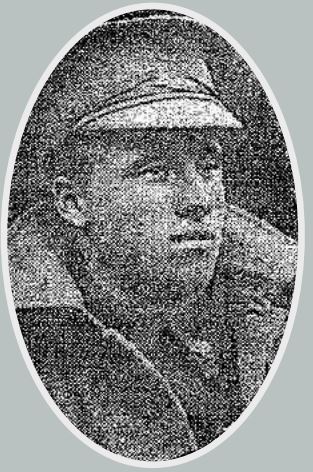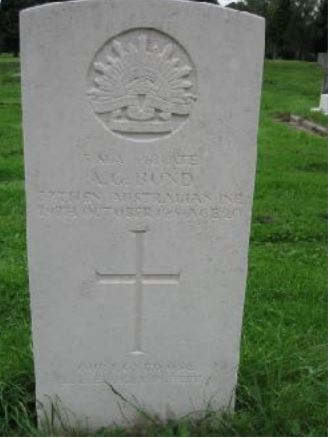37th Battalion, Australian Infantry

Albert George Bond was the son of Edward and Ethel Beatrice Bond of 277 King Street, West Bendigo, Victoria. He was a natural born Australian, educated at State School, Golden Square, Bendigo and at the time of enlistment stated his occupation to be farm hand.
A single man, he enlisted at Bendigo on 28 September 1916, at the age of 18 years 2 months and was assigned to 60th Battalion, 8th Reinforcement. His previous experience of the military was three years in the Cadet Force.
On 16 November 1916 he embarked from Melbourne on HMAT A7 Medic, and arrived at Plymouth on 18 February 1917. He stayed with 60th Battalion until 27 April 1917 before joining 67th Battalion, with whom he stayed until 31 August 1917.
On 25 August 1917 he sailed from Southampton for France, as a designated reinforcement for 37th Battalion. This battalion was part of 10th Brigade, one of the brigades making up 3rd Australian Division.
He officially joined 37th Battalion on 1 September 1917.
On 12 October 1917 (the opening day of the First Battle of Passchendaele), he suffered a severe gunshot wound to his right thigh and passed through 3rd Australian Field Ambulance, 3rd Australian Casualty Clearing Station (CCS) to 11 Stationery Hospital at Rouen. On 17 October 1917 he was transferred, via the SS Panama to England and admitted to Stratford-upon-Avon War Hospital the following day.
He was discharged from hospital on 14 November 1917 and spent some time on convalescence and training (with a couple of short spells in hospital due to illness), before returning to France, via Folkestone, on 12 May 1918. After spending time at Etaples he rejoined 37th Battalion, at the front, on 25 May 1918.
On 23 August 1918 he reported sick to Brigade Field Ambulance, with a stomach infection, which turned into fever, for which a further time was spent in hospital in France.
He returned to his unit on 28 September 1918. The following day 3rd Australian Division took part in the attack on the St Quentin Canal, one of the actions of a series known as ‘The Breaking of the Hindenburg Line’. In the fighting at Mont St Quentin, Private Bond suffered a gun shot wound to his left thigh, not as severe as that suffered in 1917 but sufficiently so for him to be transferred to England, via 12th Australian CCS, 2nd General Hospital at Le Havre.
Once in the UK he was admitted to Cheltenham VAD Hospital on 2 October 1917. It is uncertain whether he was actually admitted here or directly to the Red Cross Hospital at Gloucester.
His wounded thigh had virtually healed, when he contracted influenza and pneumonia, from which he died at 2am on 29 October 1918, age 20. A death notice printed in the Gloucester Journal of 2 November 1918 states that death occurred at the Red Cross Hospital, Great Western Road, Gloucester.
He was given a full military funeral, with flowers donated by comrades, sisters and nursing staff of the hospital. As a designated Methodist, the Minister at the burial was Rev B Bailey. He was laid to rest in Gloucester Old Cemetery, where his grave is marked with a standard CWGC headstone, inscribed with ‘Our loved one, peacefully sleeping’.
Albert Bond had an older brother, 1799 Private Francis Edward Bond, who also served (with 38th Battalion – also 3rd Australian Division). He was a Clerk, who enlisted at Melbourne on 16 August 1916. He suffered a gun shot wound to the forehead on 13 January 1917 and on 7 June 1917 was partly stunned by a shell burst, which left him with headaches and general weakness (a condition described as neurasthenia). He was sent to England on 12 June 1917, to 4th London General Hospital at Denmark Hill. On 31 October 1917 he was sent back to Australia and discharged from the Army on 13 February 1918.

Researched by Graham Adams 5 May 2014 (revised)
